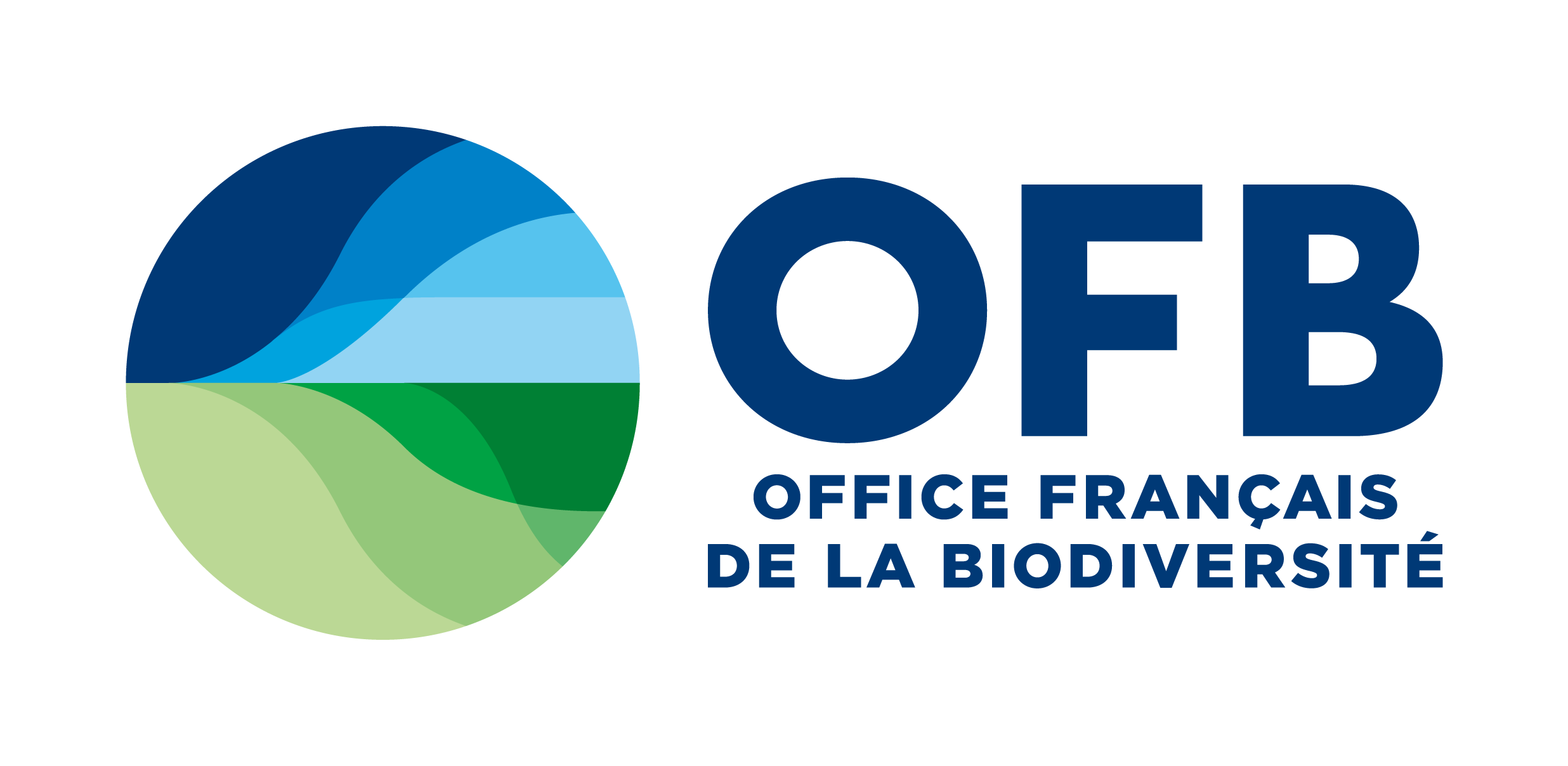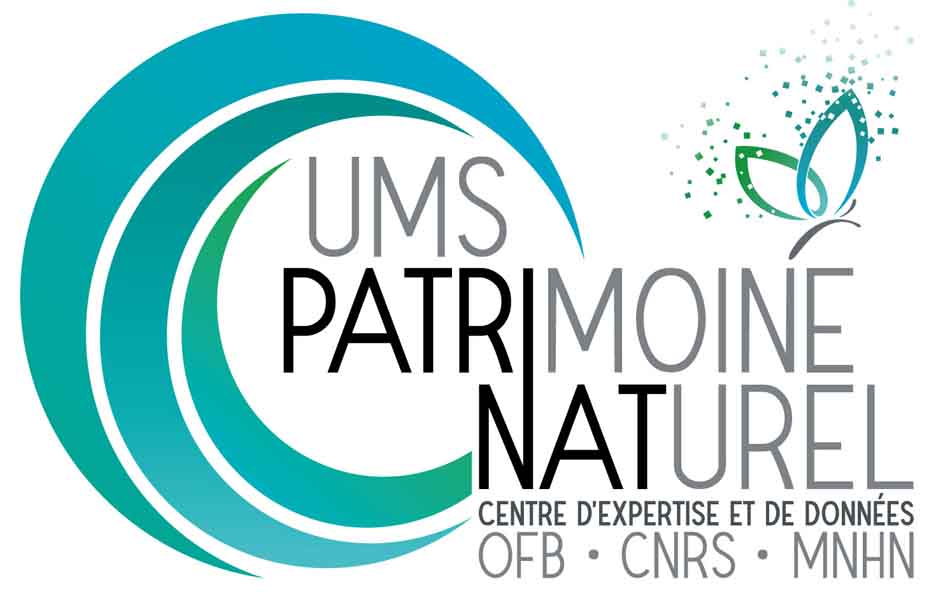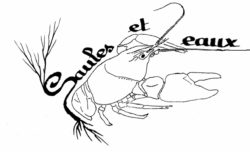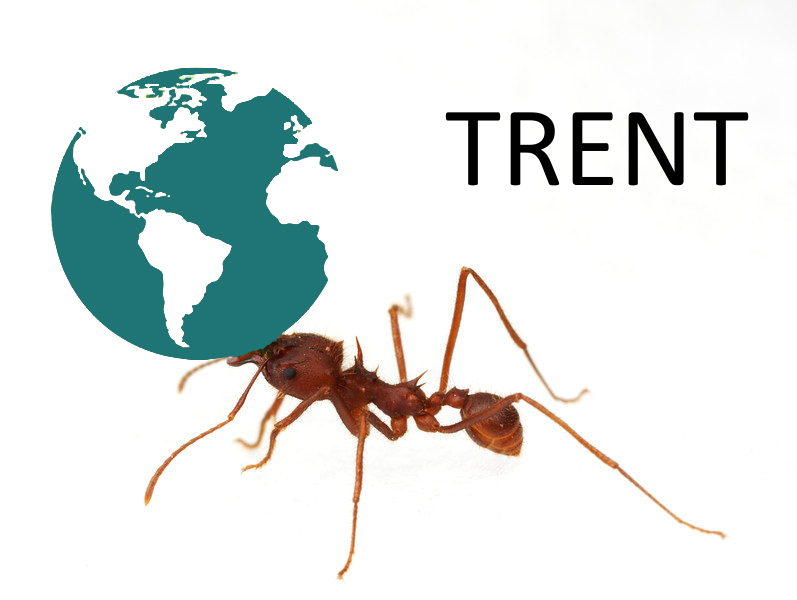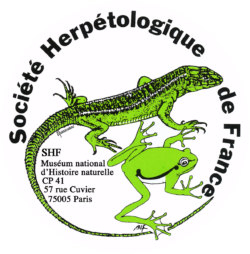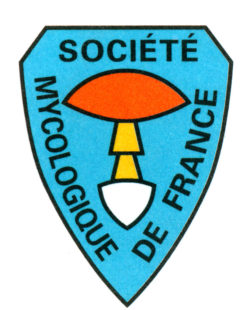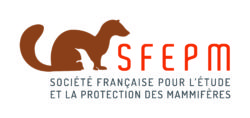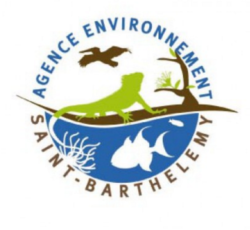Références bibliographiques relatives au groupe des poissons
Pour trouver un mot, tapez celui-ci dans la barre de recherche de votre navigateur
Albins, M. 2013. Effects of invasive Pacific red lionfish Pterois volitans versus a native predator on Bahamian coral-reef fish communities. Biological Invasions 15(1): 29-43. Lire
Alemadi, S. & D. Jenkins. 2008. Behavioral constraints for the spread of the eastern mosquitofish, Gambusia holbrooki (Poeciliidae). Biological Invasions 10(1): 59-66.Lire
Almodóvar, A., & al. 2012. Natural hybridization with invasive bleak Alburnus alburnus threatens the survival of Iberian endemic calandino Squalius alburnoides complex and Southern Iberian chub Squalius pyrenaicus. Biological Invasions 14(11): 2237-2242.Lire
Andradi-Brown, D. A., & al. 2017. Large-scale invasion of western Atlantic mesophotic reefs by lionfish potentially undermines culling-based management. Biological Invasions 19(3): 939-954.Lire
Ayres, R., & al. 2010. Low diversity and high levels of population genetic structuring in introduced eastern mosquitofish (Gambusia holbrooki) in the greater Melbourne area, Australia. »Biological Invasions 12(11): 3727-3744.Lire
Azzurro, E., & al. 2016. Lag times in Lessepsian fish invasion. Biological Invasions 18(10): 2761-2772.Lire
Azzurro, E., & al. 2013. Fistularia commersonii in the Mediterranean Sea: invasion history and distribution modeling based on presence-only records. Biological Invasions 15(5): 977-990.Lire
Azzuro E(1), P. P. F. A. 2004. FIRST record of Fistularia commersonii (Fistularidae) from the central mediterranean. Cybium 28(1): 72-74.Lire
Bajer, P. & Sorensen, P. 2010. Recruitment and abundance of an invasive fish, the common carp, is driven by its propensity to invade and reproduce in basins that experience winter-time hypoxia in interconnected lakes. Biological Invasions 12(5): 1101-1112.Lire
Bajer, P., & al. 2012. Variation in native micro-predator abundance explains recruitment of a mobile invasive fish, the common carp, in a naturally unstable environment. Biological Invasions 14(9): 1919-1929.Lire
Balart, E.,& al. 2009. On the first record of a potentially harmful fish, Sparus aurata in the Gulf of California. Biological Invasions 11(3): 547-550.Lire
Barker, B. D., & al. 2018. Hot or not? Comparative behavioral thermoregulation, critical temperature regimes, and thermal tolerances of the invasive lionfish Pterois sp. versus native western North Atlantic reef fishes. Biological Invasions 20(1): 45-58.Lire
Bašić, T., & al. 2019. Trophic consequences of an invasive, small-bodied non-native fish, sunbleak Leucaspius delineatus, for native pond fishes. Biological Invasions 21(1): 261-275.Lire
Bauer, C., & al. 2007. Predicting habitat use and trophic interactions of Eurasian ruffe, round gobies, and zebra mussels in nearshore areas of the Great Lakes. Biological Invasions 9(6): 667-678.Lire
Bedarf, A., & al. 2001. Initial Six-year Expansion of an Introduced Piscivorous Fish in a Tropical Central American Lake. Biological Invasions 3(4): 391-404.Lire
Ben Rais Lasram, F. & Mouillot, D. 2009. Increasing southern invasion enhances congruence between endemic and exotic Mediterranean fish fauna. Biological Invasions 11(3): 697-711.Lire
Benejam, L., & al. 2009. Life history and parasites of the invasive mosquitofish (Gambusia holbrooki) along a latitudinal gradient. Biological Invasions 11(10): 2265-2277.Lire
Benjamin, J. R. & Baxter, C. V. 2012. Is a trout a trout? A range-wide comparison shows nonnative brook trout exhibit greater density, biomass, and production than native inland cutthroat trout. Biological Invasions 14(9): 1865-1879.Lire
Beneteau, C., & al. 2012. Range expansion by invasion: genetic characterization of invasion of the greenside darter (Etheostoma blennioides) at the northern edge of its distribution. Biological Invasions 14(1): 191-201.Lire
Benoît, O. 2012. Contrôle des espèces aquatiques envahissantes du Québec : Le cas du Gobie à tâches noires (Neogobius melanostomus) au lac Saint-Pierre. Centre universitaire de formation en environnement, 108 pp.Lire
Björklund, M. & Almqvist, G. 2010. Rapid spatial genetic differentiation in an invasive species, the round goby Neogobius melanostomus in the Baltic Sea. Biological Invasions 12(8): 2609-2618.Lire
Blanchet S., & al. 2010. Non-native species disrupt the worldwide patterns of freshwater fish body size: implications for Bergmann’s rule. Ecology Letters 13: 421-431.Lire
Blanchet S., & al. 2009. Broad-scale determinants of non-native fish species richness are context-dependent. Proceedings of the Royal Society B 276: 2385-2394.Lire
Blanchet S., & al. 2007. Competitive interactions between native and exotic salmonids: a combined field and laboratory demonstration. Ecology of Freshwater Fish 16: 133-143.Lire
Blanco-Garrido, F., & al. 2008. Eurasian otter (Lutra lutra) diet and prey selection in Mediterranean streams invaded by centrarchid fishes. Biological Invasions 10(5): 641-648.Lire
Błońska, D., & al. 2016. Shelter competition between the invasive western tubenose goby and the native stone loach is mediated by sex. Journal of Limnology 76(2).Lire
Blum, M., & al. 2010. Reproductive isolation and the expansion of an invasive hybrid swarm. Biological Invasions 12(8): 2825-2836.Lire
Bodilis, P., & al. 2012. Occurrence of the Atlantic species, Pisodonophis semicinctus (Osteichthyes: Ophichthidae), along the Mediterranean coast. Journal of Applied Ichthyology 28(4): 652-654.Lire
Bomford, M., & al. 2010. Predicting establishment success for introduced freshwater fishes: a role for climate matching. Biological Invasions 12(8): 2559-2571.Lire
Bonebrake, J. 2013. Carpe Lacum: Asian Carp and the Great Lakes. Colo. Nat. Resources, Energy & Envtl. L. Rev. 24: 39.Lire
Brasil, J., & al. 2013. Local ecological knowledge is not a useful source of information concerning impacts caused by non-native Nile tilapia on fishery stocks. Biological science 35(3): 381-388.Lire
Brito, A., & al. 2011. On the occurrence of the African hind, Cephalopholis taeniops, in the Canary Islands (eastern subtropical Atlantic): introduction of large-sized demersal littoral fishes in ballast water of oil platforms? Biological Invasions 13(10): 2185-2189.Lire
Britton, J. R., & al. 2015. Synergistic effects of propagule pressure and trophic subsidies overcome biotic resistance to a non-native fish. Biological Invasions 17(11): 3125-3131.Lire
Britton, J. R., & al. 2010. Trophic interactions and consequent impacts of the invasive fish Pseudorasbora parva in a native aquatic foodweb: a field investigation in the UK. Biological Invasions 12(6): 1533-1542.Lire
Britton, J., & al. 2010. Towards the successful control of the invasive Pseudorasbora parva in the UK. Biological Invasions 12(1): 125-131.Lire
Britton, J. R., & al. 2010. The introduced Micropterus salmoides in an equatorial lake: a paradoxical loser in an invasion meltdown scenario? Biological Invasions 12(10): 3439-3448.Lire
Britton, J. R., & al. 2011. A modular assessment tool for managing introduced fishes according to risks of species and their populations, and impacts of management actions. Biological Invasions 13(12): 2847-2860.Lire
Brooks, W. & R. Jordan. 2010. Enhanced interspecific territoriality and the invasion success of the spotted tilapia (Tilapia mariae) in South Florida. Biological Invasions 12(4): 865-874.Lire
Brosse S., & al. 2013. Fish-SPRICH: a database of freshwater fish species richness throughout the World. Hydrobiologia 700:343-349.Lire
Brufao Curiel, P. 2012. Las especies exoticas invasoras y el derecho, con especial referencia a las especies acuaticas, la pesca recreativa y la acuicultura. Revista Catalana de Dret Ambiental 3(1): 1-54.Lire
Budy, P., & al. 2013. Limitation and facilitation of one of the world’s most invasive fish: an intercontinental comparison. Ecology 94(2): 356-367.Lire
Bumbeer, J., & al. 2018. Predicting impacts of lionfish (Pterois volitans) invasion in a coastal ecosystem of southern Brazil. Biological Invasions 20(5): 1257-1274.Lire
Bylemans, J., & al. 2016. Improving the containment of a freshwater invader using environmental DNA (eDNA) based monitoring. Biological Invasions 18(10): 3081-3089.Lire
Calkins, H. A., & al. 2011. Linking silver carp habitat selection to flow and phytoplankton in the Mississippi River. Biological Invasions 14(5): 949-958. Lire
Cardona, L. 2006. Trophic Cascades Uncoupled in a Coastal Marsh Ecosystem. Biological Invasions 8(4): 835-842. Lire
Casal, C. M. V. 2006. Global Documentation of Fish Introductions: the Growing Crisis and Recommendations for Action. Biological Invasions 8(1): 3-11.Lire
Castaldelli, G., & al. 2013. Introduction of exotic fish species and decline of native species in the lower Po basin, north-eastern Italy. Aquatic Conservation: Marine and Freshwater Ecosystems 23(3): 405-417.Lire
Chen, P., & al. 2006. Ecological niche modeling as a predictive tool: silverand bighead carps in North America. Biological Invasions 9(1): 43-51.Lire
Church, K., & al. 2017. Aggressive interactions between two invasive species: the round goby (Neogobius melanostomus) and the spinycheek crayfish (Orconectes limosus). Biological Invasions 19(1): 425-441.Lire
Ciancio, J. E., & al. 2015. The invasion of an Atlantic Ocean river basin in Patagonia by Chinook salmon: new insights from SNPs. Biological Invasions 17(10): 2989-2998.Lire
Clapp, DF., & al. 2012. Proposed. 2010. Plan for the Prevention, Detection, Assessment, and Management of Asian Carps in Michigan Waters, State of Michigan, Department of natural resources. 60: 68 pp.Lire
Clark, NA. 2012. Invasion of Reservation: U.S. policy responses to the invasive lionfish within Marine Protected Areas. Hartford, Trinity College Digital Repository. Senior Thesis: 1-53.Lire
Collins, R. A., & al. 2012. Something in the water: biosecurity monitoring of ornamental fish imports using environmental DNA. Biological Invasions 15(6): 1209-1215.Lire
Cooke, S. L. 2016. Anticipating the spread and ecological effects of invasive bigheaded carps (Hypophthalmichthys spp.) in North America: a review of modeling and other predictive studies. Biological Invasions 18(2): 315-344.Lire
Copp, G. H., & al. 2017. Trophic consequences of non-native pumpkinseed Lepomis gibbosus for native pond fishes. Biological Invasions 19(1): 25-41.Lire
Corkum, L. D., & al. 2004. The Round Goby, Neogobius melanostomus, a Fish Invader on both sides of the Atlantic Ocean. Biological Invasions 6(2): 173-181. Lire
Corkum, L. D., & al. 2006. Evidence of a Male Sex Pheromone in the Round Goby (Neogobius melanostomus). Biological Invasions 8(1): 105-112. Lire
Correa, C., & Gross, M. R. 2008. Chinook salmon invade southern South America. Biological Invasions 10: 615-639. Lire
Correa, C., Bravo, A. P., & Hendry, A. P. 2012. Reciprocal trophic niche shifts in native and invasive fish: salmonids and galaxiids in Patagonian lakes. Freshwater biology 57(9): 1769–1781. Lire
Corsini, M. K., G., & Economidis, P. S. 2002. Lessepsian migrant Fistularia commersonii from the Rhodesmarine area. Journal of Fish Biology: 1061–1062. Lire
Costa-Pierce, B. A. 2003. Rapid evolution of an established feral tilapia (Oreochromis spp.): the need to incorporate invasion science into regulatory structures. Biological Invasions 5(1): 71-84. Lire
Coulter, A. A., & al. 2019. Seasonal variation in resource overlap of invasive and native fishes revealed by stable isotopes. Biological Invasions 21(2): 315-321. Lire
Coulter, A. A., & al. 2016. Invasive Silver Carp movement patterns in the predominantly free-flowing Wabash River (Indiana, USA). Biological Invasions 18(2): 471-485. Lire
Cucherousset, J., & al. 2009. Life-history traits and potential invasiveness of introduced pumpkinseed Lepomis gibbosus populations in northwestern Europe. Biological Invasions 11(9): 2171-2180. Lire
Daga, V. S. & É. A. Gubiani. 2012. Variations in the endemic fish assemblage of a global freshwater ecoregion: Associations with introduced species in cascading reservoirs. Acta Oecologica 41: 95-105. Lire
Dalu, T., & al. 2012. The feeding habits of an introduced piscivore, Hydrocynus vittatus (Castelnau 1861) in a small tropical African reservoir. Pan-American Journal of Aquatic Sciences 7(2): 85-92. Lire
Darling, E. S., & al. 2011. Indo-Pacific lionfish are larger and more abundant on invaded reefs: a comparison of Kenyan and Bahamian lionfish populations. Biological Invasions 13(9): 2045-2051. Lire
Dauphinais, J. D., &al. 2018. Source–sink dynamics explain the distribution and persistence of an invasive population of common carp across a model Midwestern watershed. Biological Invasions 20(8): 1961-1976. Lire
Dennis, C. E., & al. 2015. Molecular and behavioral responses of early-life stage fishes to elevated carbon dioxide. Biological Invasions 17(11): 3133-3151. Lire
Díez-del-Molino, D., & al. 2016. Temporal genetic dynamics among mosquitofish (Gambusia holbrooki) populations in invaded watersheds. Biological Invasions 18(3): 841-855. Lire
Di Prinzio, C. Y., & al. 2013. Feeding strategy of the non-native rainbow trout, Oncorhynchus mykiss, in low-order Patagonian streams. Fisheries Management and Ecology 20(5): 414-425. Lire
Duxbury, C., Holland, J. & Pluchino, M. 2010. Experimental evaluation of the impacts of the invasive catfish Hoplosternum littorale (Hancock, 1828) on aquatic macroinvertebrates. Aquatic Invasions 5(1): 97-102. Lire
Ellender, B. R., & al. 2016. Towards using thermal stress thresholds to predict salmonid invasion potential. Biological Invasions 18(12): 3513-3525. Lire
Esselman, P. C., & al. 2012. Spatiotemporal dynamics of the spread of African tilapias (Pisces: Oreochromis spp.) into rivers of northeastern Mesoamerica. Biological Invasions 15(7): 1471-1491. Lire
Farrington, H. L., & al. 2017. Phylogeography and population genetics of introduced Silver Carp (Hypophthalmichthys molitrix) and Bighead Carp (H. nobilis) in North America. Biological Invasions 19(10): 2789-2811. Lire
Feiner, Z. S., & al. 2012. Phenotypic shifts in white perch life history strategy across stages of invasion. Biological Invasions 14(11): 2315-2329. Lire
Fernández, D., & al. 2010. Chinook salmon (Oncorhynchus tshawytscha, Walbaum 1792) in the Beagle Channel, Tierra del Fuego: the onset of an invasion. Biological Invasions 12(9): 2991-2997. Lire
Forsyth, D. M., & al. 2012. Population dynamics of invading freshwater fish: common carp (Cyprinus carpio) in the Murray-Darling Basin, Australia. Biological Invasions 15(2): 341-354. Lire
Friedrich, T. 2012. Historical distribution, current situation and future potential of sturgeons in Austrians Rivers. Insitute of hydrobiology and Aquatic Ecosystem Management. Vienna, University of Natural Ressources and lifes sciences. Thesis. Lire
Gaither, M. R., & al. 2013. An Invasive Fish and the Time-Lagged Spread of Its Parasite across the Hawaiian Archipelago. PLoS ONE 8(2): e56940. Lire
Gendron, A. D., & al. 2011. Invasive species are less parasitized than native competitors, but for how long? The case of the round goby in the Great Lakes-St. Lawrence Basin. Biological Invasions 14(2): 367-384. Lire
Gherardi, F. G., S., & al. 2009. Alien Invertebrates and Fish in European Inland Waters. Handbook of Alien Species in Europe, Springer Science + Business Media B. V. 2009. Lire
Gibson-Reinemer, D. K., & al. 2017. Widespread and enduring demographic collapse of invasive common carp (Cyprinus carpio) in the Upper Mississippi River System. Biological Invasions 19(6): 1905-1916. Lire
Godinho, F. N. & Ferreira, M. T. 2000. Composition of Endemic Fish Assemblages in Relation to Exotic Species and River Regulation in a Temperate Stream. Biological Invasions 2(3): 231-244. Lire
Górski, K., & al. 2017. Young-of-the-year Coho Salmon Oncorhynchus kisutch recruit in fresh waters of remote Patagonian fjords in southern Chile (51°S). Biological Invasions 19(4): 1127-1136. Lire
Grabowska, J., & al. 2009. Diet and feeding habits of monkey goby (Neogobius fluviatilis) in a newly invaded area. Biological Invasions 11(9): 2161-2170. Lire
Gu, Q., & al. 2012. Comparison of benthic macroinvertebrates in three polyculture models of ponds stocking mainly Ctenopharyngodon idellus. Desalination and Water Treatment 45(1-3): 26-39. Lire
Guzzo, M. M., & al. 2013. Fifty years later: trophic ecology and niche overlap of a native and non-indigenous fish species in the western basin of Lake Erie. Biological Invasions 15(8): 1695-1711. Lire
Halfyard, E. A. 2010. A review of options for the containment, control and eradication of illegally introduced smallmouth bass (Micropterus dolomieu): 79. Lire
Hardin, S.& J. E. Hill. 2012. Risk Analysis of Barramundi Perch Lates calcarifer Aquaculture in Florida. North American Journal of Fisheries Management 32(3): 577-585. Lire
Hardouin, E. A., & al. 2018. Reconciling the biogeography of an invader through recent and historic genetic patterns: the case of topmouth gudgeon Pseudorasbora parva. Biological Invasions 20(8): 2157-2171. Lire
Harvey, C. J. & Kareiva, P. M. 2005. Community context and the influence of non-indigenous species on juvenile salmon survival in a Columbia River reservoir. Biological Invasions 7(4): 651-663. Lire
Hayden, B., & al. 2013. Interactions between invading benthivorous fish and native whitefish in subarctic lakes. Freshwater biology 58(6): 1234-1250. Lire
Hershberger, P. K., & al. 2010. Amplification and transport of an endemic fish disease by an introduced species. Biological Invasions 12(11): 3665-3675. Lire
Hohenadler, M. A. A., & al. 2018. Pomphorhynchus laevis: An invasive species in the river Rhine? Biological Invasions 20(1): 207-217. Lire
Hossain, M. M., & al. 2013. Examination of the effects of largemouth bass (Micropterus salmoides) and bluegill (Lepomis macrochirus) on the ecosystem attributes of lake Kawahara-oike, Nagasaki, Japan. Ecological Informatics 18: 149-161. Lire
Houston, B. E., & al. 2014. Overwinter survival, energy storage and reproductive allocation in the invasive round goby (Neogobius melanostomus) from a river system. Ecology of Freshwater Fish 23(2): 224-233. Lire
Hoxmeier, R. J. H. & D. J. Dieterman. 2016. Long-term population demographics of native brook trout following manipulative reduction of an invader. Biological Invasions 18(10): 2911-2922. Lire
Iacarella, J. C. & A. Ricciardi. 2015. Dissolved ions mediate body mass gain and predatory response of an invasive fish. Biological Invasions 17(11): 3237-3246. Lire
Jackson, M. C. Britton, J. R. Cucherousset, J. Guo, Z. Stakenas, S. Gozlan, R. E. Godard, M. G. Roussel, J.-m. Copp, G. H., 2016. Do non-native pumpkinseed Lepomis gibbosus affect the growth, diet and trophic niche breadth of native brown trout Salmo trutta? 772, 63–75. Lire
Jacobs, G. R., & al. 2017. Invasive species alter ontogenetic shifts in the trophic ecology of Lake Sturgeon (Acipenser fulvescens) in the Niagara River and Lake Ontario. Biological Invasions 19(5): 1533-1546. Lire
Janáč, M.,& al. 2016. No effect of round goby Neogobius melanostomus colonisation on young-of-the-year fish density or microhabitat use. Biological Invasions 18(8): 2333-2347. Lire
Jarić, I., & al. 2011. Assessing the range of newly established invasive species in rivers using probabilistic methods. Hydrobiologia 680(1): 171-178. Lire
Johnston, M. W. & Purkis, S.J. 2013. Modeling the Potential Spread of the Recently Identified Non-Native Panther Grouper Chromileptes altivelis in the Atlantic Using a Cellular Automaton Approach. PLoS ONE 8(8): e73023. Lire
Jones, R. W., & al. 2013. Using a unified invasion framework to characterize Africa’s first loricariid catfish invasion. Biological Invasions 15(10): 2139-2145. Lire
Jordaan, M. S., & al. 2017. Unexpected survival of sharptooth catfish Clarias gariepinus (Burchell 1822) during acute rotenone toxicity trials will complicate management of invasions. Biological Invasions 19(6): 1739-1744. Lire
Jude, A. J. 2012. Fisheries, Aquaculture and Exotic Species of the Laurentian Great Lakes. The North american Great Lakes / St. Lawrence River and Estuary. 18. Lire
Jůza, T., & al. 2018. Collapse of the native ruffe (Gymnocephalus cernua) population in the Biesbosch lakes (the Netherlands) owing to round goby (Neogobius melanostomus) invasion. Biological Invasions 20(6): 1523-1535. Lire
Kadye, W. T. & A. J. Booth. 2011. Integrating stomach content and stable isotope analyses to elucidate the feeding habits of non-native sharptooth catfish Clarias gariepinus. Biological Invasions 14(4): 779-795. Lire
Kalogirou, S., & al. 2007. Diet of the invasive piscivorous fish Fistularia commersonii in a recently colonized area of the eastern Mediterranean. Biological Invasions 9(8): 887-896. Lire
Kalogirou, S., & al. 2012. Feeding ecology of indigenous and non-indigenous fish species within the family Sphyraenidae. J Fish Biol 80(7): 2528-2548. Lire
Kawai, H., & al. 2013. The relationship between the snowmelt flood and the establishment of non-native brown trout (Salmo trutta) in streams of the Chitose River, Hokkaido, northern Japan. Ecology of Freshwater Fish 22(4): 645-653. Lire
Kindinger, T. L. & M. A. Albins. 2017. Consumptive and non-consumptive effects of an invasive marine predator on native coral-reef herbivores. Biological Invasions 19(1): 131-146. Lire
Kocovsky, P. M., & al. 2011. Expansion of tubenose gobies Proterorhinus semilunaris into western Lake Erie and potential effects on native species. Biological Invasions 13(12): 2775-2784. Lire
Kovačević, S., & al. 2012. Invasive Species of Macroinvertebrates and Fish in Reservoirs of Central Serbia. BALWOIS: 5 pp.
Kreiser, B. R., & al. 2000. Single Versus Multiple Sources of Introduced Populations Identified With Molecular Markers: A Case Study of a Freshwater Fish. Biological Invasions 2(4): 295-304. Lire
Kreutzenberger K., Leprieur F. & Brosse S. 2008. The influence of the invasive black bullhead Ameiurus melas on the predatory efficiency of pike Esox lucius L. Journal of Fish Biology 73: 196-205. Lire
Lauzeral C., Grenouillet G. & Brosse S. 2012. Dealing with noisy absences to optimize species distribution models: an iterative ensemble modelling approach. Plos One 7(11): e49508. Lire
Lauzeral C., & al. 2011. Identifying climatic niche shifts using coarse-grained occurrence data: a test with non-native freshwater fish. Global Ecology and Biogeography 20: 407-414. Lire
Lechelt, J. D. & P. G. Bajer. 2016. Modeling the potential for managing invasive common carp in temperate lakes by targeting their winter aggregations. Biological Invasions 18(3): 831-839. Lire
Lepori, F., & al. 2012. Are invasive and native trout functionally equivalent predators? Results and lessons from a field experiment. Aquatic Conservation: Marine and Freshwater Ecosystems 22(6): 787-798. Lire
Leprieur F., & al. 2008. Fish invasions in the world’s river systems: when natural processes are blurred by human activities. Public Library of Science, Biology 6(2): e28. Lire
Leprieur F., & al. 2009. Scientific uncertainty and the assessment of risks posed by non-native freshwater fishes. Fish and Fisheries 10: 88-97. Lire
Leprieur F., & al. 2006. Hydrological disturbance benefits a native fish at the expense of an exotic fish. Journal of Applied Ecology 43:930-939. Lire
Leprieur F., & al. 2009. Patterns and mechanisms of the distance decay of similarity in the European freshwater fish fauna: contrasting native and exotic species. Journal of Biogeography 36: 1899-1912. Lire
Liew, J. H., & al. 2016. Native richness and species level trophic traits predict establishment of alien freshwater fishes. Biological Invasions 18(12): 3495-3512. Lire
Lima Junior, D. P., & al. 2015. Are non-native species larger in their invaded range? A test with tropical floodplain fish assemblages following inundation of a biogeographic barrier. Biological Invasions 17(11): 3263-3274. Lire
Lockett, M. M. & Gomon, M. F. 2001 Ship Mediated Fish Invasions in Australia: Two New Introductions and A Consideration of Two Previous Invasions. Biological Invasions 3(2): 187-192. Lire
Lopez, L. K., & al. 2018. Behavioral interactions under multiple stressors: temperature and salinity mediate aggression between an invasive and a native fish. Biological Invasions 20(2): 487-499. Lire
Macdonald, J. I., & al. 2012. Do invasive eastern gambusia (Gambusia holbrooki) shape wetland fish assemblage structure in south-eastern Australia? Marine and Freshwater Research 63(8): 659-671. Lire
MacNamara, R., & al. 2016. Bigheaded carps (Hypophthalmichthys spp.) at the edge of their invaded range: using hydroacoustics to assess population parameters and the efficacy of harvest as a control strategy in a large North American river. Biological Invasions 18(11): 3293-3307. Lire
Madenjian, C. P., & al. 2010. Evidence for predatory control of the invasive round goby. Biological Invasions 13(4): 987-1002. Lire
Magellan, K. & E. García-Berthou. 2016. Experimental evidence for the use of artificial refugia to mitigate the impacts of invasive Gambusia holbrooki on an endangered fish. Biological Invasions 18(3): 873-882. Lire
Manné, S., & al. 2013. Colonisation of the Rhine basin by non-native gobiids: an update of the situation in France. Knowl. Managt. Aquatic Ecosyst.(411): 02. Lire
Marchetti, M. P. 1999. An Experimental Study of Competition Between the Native Sacramento Perch (Archoplites interruptus) and Introduced Bluegill (Lepomis macrochirus). Biological Invasions 1(1): 55-65. Lire
Marr, S. M., & al. 2012. An assessment of a proposal to eradicate non-native fish from priority rivers in the Cape Floristic Region, South Africa. African Journal of Aquatic Science 37(2): 131-142. Lire
Masson, L., & al. 2016. Fine scale spatio-temporal life history shifts in an invasive species at its expansion front. Biological Invasions 18(3): 775-792. Lire
Mastitsky, S. E., & al. 2010. Non-native fishes of Belarus: diversity, distribution, and risk classification using the Fish Invasiveness Screening Kit (FISK). Aquatic Invasions 5(1): 103-114. Lire
Meredith, C. S., & al. 2017. Assessing conditions influencing the longitudinal distribution of exotic brown trout (Salmo trutta) in a mountain stream: a spatially-explicit modeling approach. Biological Invasions 19(2): 503-519. Lire
McHugh, P., & al. 2012. Niche flexibility and trout–galaxiid co-occurrence in a hydrologically diverse riverine landscape. Biological Invasions 14(11): 2393-2406. Lire
Menezes, R. F., & al. 2011. Lower biodiversity of native fish but only marginally altered plankton biomass in tropical lakes hosting introduced piscivorous Cichla cf. ocellaris. Biological Invasions 14(7): 1353-1363. Lire
Morán-López, R. & O. Uceda Tolosa. 2017. Relative leaping abilities of native versus invasive cyprinids as criteria for selective barrier design. Biological Invasions 19(4): 1243-1253. Lire
Morris, J. A., & al. 2010. A stage-based matrix population model of invasive lionfish with implications for control. Biological Invasions 13(1): 7-12. Lire
Norman, J. D. & G. W. Whitledge. 2015. Recruitment sources of invasive Bighead carp (Hypopthalmichthys nobilis) and Silver carp (H. molitrix) inhabiting the Illinois River. Biological Invasions 17(10): 2999-3014. Lire
Olds, A. A. 2012. The Ichthyofauna of the wilderness lakes systems, wester Cape, with particular emphasis on alien fish species and their establishment success.Rhodes university. Master of science: 201 pp. Lire
Parker, I. M., & al. 1999. Impact: Toward a Framework for Understanding the Ecological Effects of Invaders. Biological Invasions 1(1): 3-19. Lire
Pasco-Viel, E., & al. 2010. Evolutionary Trends of the Pharyngeal Dentition in Cypriniformes (Actinopterygii: Ostariophysi). PLoS ONE 5(6): e11293. Lire
Pascual, M., & al. 2002. Evaluating Potential Effects of Exotic Freshwater Fish From Incomplete Species Presence–absence Data. Biological Invasions 4(1): 101-113. Lire
Peake, J., & al. 2018. Feeding ecology of invasive lionfish (Pterois volitans and Pterois miles) in the temperate and tropical western Atlantic. Biological Invasions 20(9): 2567-2597. Lire
Pennuto, C. M., & al. 2018. Fish invasion alters ecosystem function in a small heterotrophic stream. Biological Invasions 20(4): 1033-1047. Lire
Pérez-Bote, J. L. & R. Roso. 2012. Diet of the introduced pikeperch Sander lucioperca (L.) (Osteichthyes, Percidae) in a recent colonised reservoir in south-western Iberian Peninsula. Italian Journal of Zoology 79(4): 617-626. Lire
Persat, H., Keith, P. 1997. La répartition géographique des poissons d’eau douce en France : Qui est autochtone et qui ne l’est pas ? Bull. Fr. Pêche Piscic. . 344/345: 15-32. Lire
Pettitt-Wade, H., & al. 2015. Niche plasticity in invasive fishes in the Great Lakes. Biological Invasions 17(9): 2565-2580. Lire
Piazzini, S., & al. 2010. A tropical fish community in thermal waters of southern Tuscany. Biological Invasions 12(9): 2959-2965. Lire
Pilliod, D. S., & al. 2012. Persistence and extirpation in invaded landscapes: patch characteristics and connectivity determine effects of non-native predatory fish on native salamanders. Biological Invasions 15(3): 671-685. Lire
Purcell, K. M., & al. 2012. Evaluation of the introduction history and genetic diversity of a serially introduced fish population in New Zealand. Biological Invasions 14(10): 2057-2065. Lire
Raab, D., & al. 2018. Low-head dams facilitate Round Goby Neogobius melanostomus invasion. Biological Invasions 20(3): 757-776. Lire
Radhakrishnan, K. V., & al. 2012. Status of alien fish species in the Western Ghats (India) as revealed from 2000–2004 surveys and literature analyses. Journal of Applied Ichthyology 28(5): 778-784. Lire
Radke, R. J., & al. 2000. Suitability of pharyngeal bone measures commonly used for reconstruction of prey fish length. J Fish Biol 57(4): 961-967. Lire
Rakauskas, V., & al. 2013. Increasing population of the invader round goby, Neogobius melanostomus (Actinopterygii: Perciformes; Gobiidae), and its trophic role in the Curonian lagoon, SE Baltic sea. Acta Ichthyologica et Piscatoria 43(2). Lire
Rashnavadi, M. 2010. The ecological impacts of secondary salinisation on halo-tolerant fishes in south-western Australia, Murdoch University. Doctor of Philosophy: 219 pp. Lire
Rehage, J. S. & Sih A. 2004. Dispersal Behavior, Boldness, and the Link to Invasiveness: A Comparison of Four Gambusia Species. Biological Invasions 6(3): 379-391. Lire
Ricciardi, A. & M. Mottiar. 2006. Does Darwin’s Naturalization Hypothesis Explain Fish Invasions? Biological Invasions 8(6): 1403-1407. Lire
Rivera, J. M., & al. 2018. Water guns affect abundance and behavior of bigheaded carp and native fish differently. Biological Invasions 20(5): 1243-1255. Lire
Rogowski, D. L. & Stockwell, C. A. 2006. Assessment of Potential Impacts of Exotic Species on Populations of a Threatened Species, White Sands Pupfish, Cyprinodon tularosa. Biological Invasions 8(1): 79-87. Lire
Roll, U., & al. 2007. Characteristics of the introduced fish fauna of Israel. Biological Invasions 9(7): 813-824. Lire
Ross, R. M., & al. 2001. Landscape Determinants of Nonindigenous Fish Invasions. Biological Invasions 3(4): 347-361. Lire
Rothman, B.-S., Goren, M., & Galil, B. S. 2013. Cheilodipterus novemstriatus (Rüppell, 1838) along the Levantine coast of the Mediterranean Sea: a forthcoming invasion? BioInvasions Records 2: 4 pp. Lire
Roy, M., & al. 2018. Development of environmental DNA (eDNA) methods for detecting high-risk freshwater fishes in live trade in Canada. Biological Invasions 20(2): 299-314. Lire
Rueda, E. C., & al. 2017. Displacement of native Patagonian freshwater silverside populations (Odontesthes hatcheri, Atherinopsidae) by introgressive hybridization with introduced O. bonariensis. Biological Invasions 19(3): 971-988. Lire
Sampson, S. J., & al. 2008. Diet overlap among two Asian carp and three native fishes in backwater lakes on the Illinois and Mississippi rivers. Biological Invasions 11(3): 483-496. Lire
Sancho, G., & al. 2018. Invasive Lionfish (Pterois volitans/miles) feeding ecology in Biscayne National Park, Florida, USA. Biological Invasions 20(9): 2343-2361. Lire
Sass, G. G., & al. 2009. A mark-recapture population estimate for invasive silver carp (Hypophthalmichthys molitrix) in the La Grange Reach, Illinois River. Biological Invasions 12(3): 433-436. Lire
Shelton, J. M., & al. 2018. Temperature mediates the impact of non-native rainbow trout on native freshwater fishes in South Africa’s Cape Fold Ecoregion. Biological Invasions 20(10): 2927-2944. Lire
Schneider, E. V. C., & al. 2018. Fish behavior in elevated CO2: implications for a movement barrier in flowing water. Biological Invasions 20(7): 1899-1911. Lire
Schröder, V. & Garcia de Leaniz, C. 2010. Discrimination between farmed and free-living invasive salmonids in Chilean Patagonia using stable isotope analysis. Biological Invasions 13(1): 203-213. Lire
Schlumberger, O., Sagliocco, M., Proteau, J.P. 2001. Biogéographie du Silure (Silurus glanis) : causes hydrographiques, climatiques et anthropiques. Bull. Fr. Pêche Piscic. 357/360 : 533-547. Lire
Senior, A. M., & al. 2013. The practicality of Trojan sex chromosomes as a biological control: an agent based model of two highly invasive Gambusia species. Biological Invasions 15(8): 1765-1782. Lire
Shuai, F., & al. 2018. Biological invasions undermine the functional diversity of fish community in a large subtropical river. Biological Invasions 20(10): 2981-2996. Lire
Shulse, C. D. & Semlitsch, R. D. 2013. Western mosquitofish (Gambusia affinis) bolster the prevalence and severity of tadpole tail injuries in experimental wetlands. » Hydrobiologia 723(1): 131-144. Lire
Smith, N. S.,& al. 2017. Density-dependent colonization and natural disturbance limit the effectiveness of invasive lionfish culling efforts. Biological Invasions 19(8): 2385-2399. Lire
Smith, G. R., & al. 2007. Behavioral responses of American toad and bullfrog tadpoles to the presence of cues from the invasive fish, Gambusia affinis. Biological Invasions 10(5): 743-748. Lire
Smith, G. R. & Dibble, C. J. 2012. Effects of an Invasive Fish (Gambusia affinis) and Anthropogenic Nutrient Enrichment on American Toad (Anaxyrus americanus) Tadpoles. Journal of Herpetology 46(2): 198-202. Lire
Solomon, L. E., & al. 2016. Long-term changes in fish community structure in relation to the establishment of Asian carps in a large floodplain river. Biological Invasions 18(10): 2883-2895. Lire
Splendiani, A., & al. 2016. Alien brown trout invasion of the Italian peninsula: the role of geological, climate and anthropogenic factors. Biological Invasions 18(7): 2029-2044. Lire
Stapp, P. & Hayward, G. D. 2002. Effects of an Introduced Piscivore on Native Trout: Insights from a Demographic Model. Biological Invasions 4(3): 299-316. Lire
Stoffels, R. J., & al. 2017. Heat and hypoxia give a global invader, Gambusia holbrooki, the edge over a threatened endemic fish on Australian floodplains. Biological Invasions 19(8): 2477-2489. Lire
Sutton, T. M., & al. 2013. Agonistic behavioral interactions between introduced western mosquitofish and native topminnows. Journal of Freshwater Ecology 28(1): 1-16. Lire
Taylor, G. C. & Weyl, O. L. F. 2013. Validation of annulus formation in otoliths of largemouth bass Micropterus salmoides outside their native range. Journal of Applied Ichthyology 29(2): 381-386. Lire
Thompson, K. A., & al. 2012. Eastern mosquitofish resists invasion by nonindigenous poeciliids through agonistic behaviors. Biological Invasions 14(7): 1515-1529. Lire
Thresher, R. E., & al. 2018. Impacts of an invasive virus (CyHV-3) on established invasive populations of common carp (Cyprinus carpio) in North America. Biological Invasions 20(7): 1703-1718. Lire
Thresher, R. E., & al. 2013. Genetic control of invasive fish: technological options and its role in integrated pest management. Biological Invasions 16(6): 1201-1216. Lire
Toussaint A., Beauchard O., Oberdorff T., Brosse S. & Villeger S. 2016. Worldwide freshwater fish homogenization is driven by a few widespread introduced species. Biological Invasions (in press). Lire
Toussaint A., & al. 2014. Historical assemblage distinctiveness and the introduction of widespread non-native species explain worldwide changes in freshwater fish taxonomic dissimilarity. Global Ecology and Biogeography 23:574-584. Lire
Trexler, J. C., & al. 2000. Empirical Assessment of Fish Introductions in a Subtropical Wetland: An Evaluation of Contrasting Views. Biological Invasions 2(4): 265-277. Lire
Tucker, E. K., & al. 2019. Glucocorticoid and behavioral variation in relation to carbon dioxide avoidance across two experiments in freshwater teleost fishes. Biological Invasions 21(2): 505-517. Lire
Tuckett, Q. M., & al. 2017. Landscape-scale survey of non-native fishes near ornamental aquaculture facilities in Florida, USA. Biological Invasions 19(1): 223-237. Lire
Tuckett, Q. M., & al. 2016. Variation in cold tolerance in escaped and farmed non-native green swordtails (Xiphophorus hellerii) revealed by laboratory trials and field introductions. Biological Invasions 18(1): 45-56. Lire
Tuttle, L. J., & al. 2017. Parasite-mediated enemy release and low biotic resistance may facilitate invasion of Atlantic coral reefs by Pacific red lionfish (Pterois volitans). Biological Invasions 19(2): 563-575. Lire
Unmack, P. J. & Fagan, W. F. 2004. Convergence of Differentially Invaded Systems toward Invader-dominance: Time-lagged Invasions as a Predictor in Desert Fish Communities. Biological Invasions 6(2): 233-243. Lire
Valiente, A. G., & al. 2009. Brown trout (Salmo trutta) invasiveness: plasticity in life-history is more important than genetic variability. Biological Invasions 12(3): 451-462. Lire
Vannini, A., & al. 2018. Gambusia holbrooki, the ‘tadpolefish’: The impact of its predatory behaviour on four protected species of European amphibians. Aquatic Conservation: Marine and Freshwater Ecosystems 28(2): 476-484. Lire
Verhelst, P., al. 2016. The distribution of an invasive fish species is highly affected by the presence of native fish species: evidence based on species distribution modelling. Biological Invasions 18(2): 427-444. Lire
Verreycken, H., & al. 2010. Present status of the North American Umbra pygmaea (DeKay, 1842) (eastern mudminnow) in Flanders (Belgium) and in Europe. Aquatic Invasions 5(1): 83-96. Lire
Vetter, B. J., & al. 2015. Acoustical deterrence of Silver Carp (Hypophthalmichthys molitrix). Biological Invasions 17(12): 3383-3392.
Villeger S. & Brosse S. 2012. Measuring changes in taxonomic dissimilarity following species introductions and extirpations. Ecological Indicators 18: 552-558. Lire
Volta, P., & al. 2013. The population biology and life history traits of Eurasian ruffe [Gymnocephalus cernuus (L.), Pisces: Percidae] introduced into eutrophic and oligotrophic lakes in Northern Italy. J. Limnol. 72(2): 28-290. Lire
Wijethunga, U., & al. 2016. Far from home: responses of an American predator species to an American prey species in a jointly invaded area of Australia. Biological Invasions 18(6): 1645-1652. Lire
Young, M. J., & al. 2017. Habitat partitioning by native and alien fishes and decapods in novel habitats of the upper San Francisco Estuary. Biological Invasions 19(9): 2693-2710. Lire
Zengeya, T. A., & al. 2013. A qualitative ecological risk assessment of the invasive Nile tilapia, Oreochromis niloticus in a sub-tropical African river system (Limpopo River, South Africa). Aquatic Conservation: Marine and Freshwater Ecosystems 23(1): 51-64. Lire


